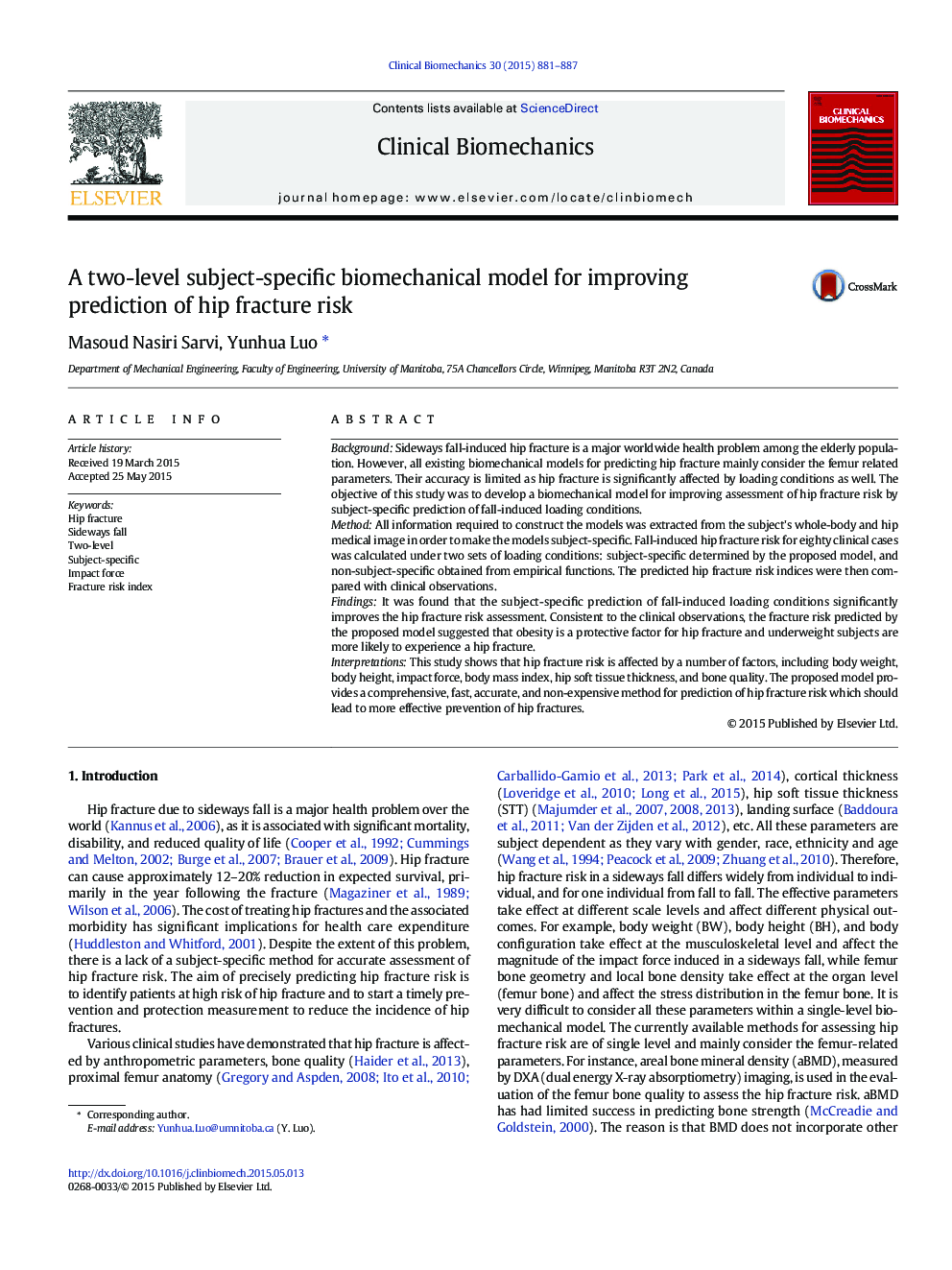| Article ID | Journal | Published Year | Pages | File Type |
|---|---|---|---|---|
| 6204702 | Clinical Biomechanics | 2015 | 7 Pages |
â¢A two-level biomechanical model considers risk factors at both musculoskeletal and femur level;â¢The models are constructed subject-specifically by using the subject's medical images;â¢Hip soft tissue is able to greatly attenuate the impact energy and thus reduce the impact force;â¢Consistent with clinical observations, high BMI has been found a protective not a risk factor of hip fracture.
BackgroundSideways fall-induced hip fracture is a major worldwide health problem among the elderly population. However, all existing biomechanical models for predicting hip fracture mainly consider the femur related parameters. Their accuracy is limited as hip fracture is significantly affected by loading conditions as well. The objective of this study was to develop a biomechanical model for improving assessment of hip fracture risk by subject-specific prediction of fall-induced loading conditions.MethodAll information required to construct the models was extracted from the subject's whole-body and hip medical image in order to make the models subject-specific. Fall-induced hip fracture risk for eighty clinical cases was calculated under two sets of loading conditions: subject-specific determined by the proposed model, and non-subject-specific obtained from empirical functions. The predicted hip fracture risk indices were then compared with clinical observations.FindingsIt was found that the subject-specific prediction of fall-induced loading conditions significantly improves the hip fracture risk assessment. Consistent to the clinical observations, the fracture risk predicted by the proposed model suggested that obesity is a protective factor for hip fracture and underweight subjects are more likely to experience a hip fracture.InterpretationsThis study shows that hip fracture risk is affected by a number of factors, including body weight, body height, impact force, body mass index, hip soft tissue thickness, and bone quality. The proposed model provides a comprehensive, fast, accurate, and non-expensive method for prediction of hip fracture risk which should lead to more effective prevention of hip fractures.
